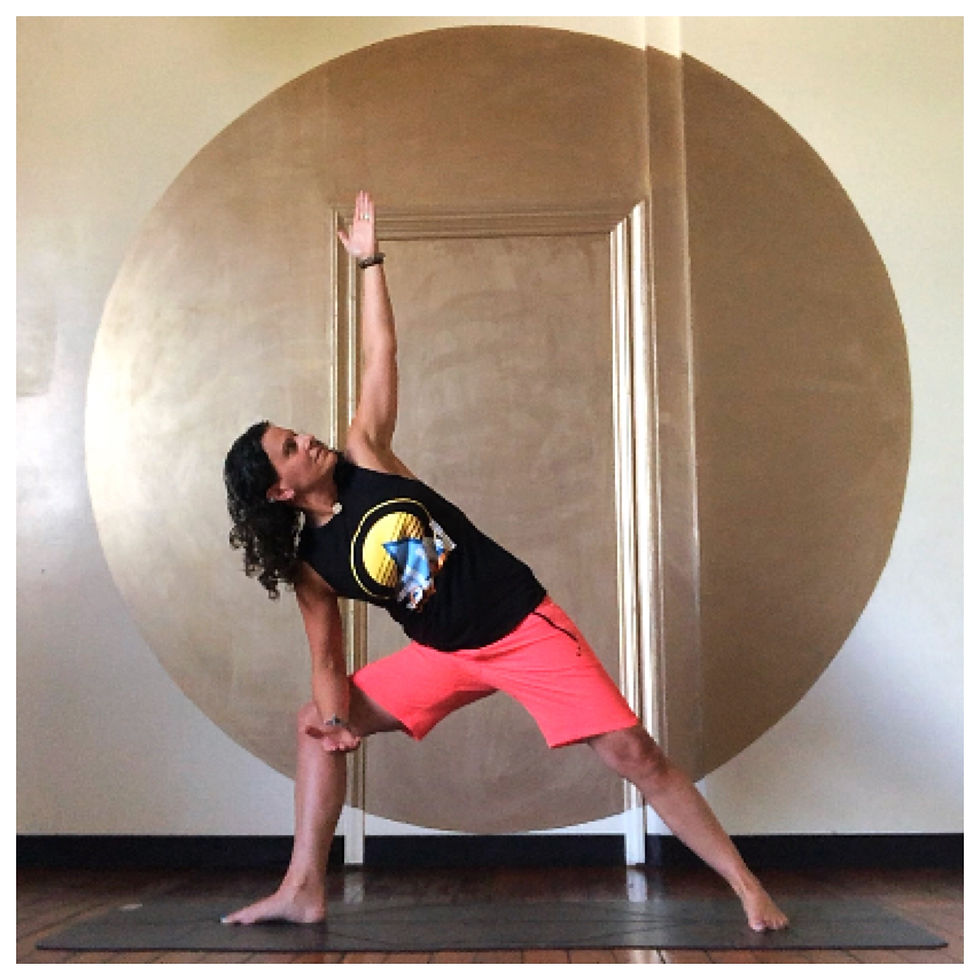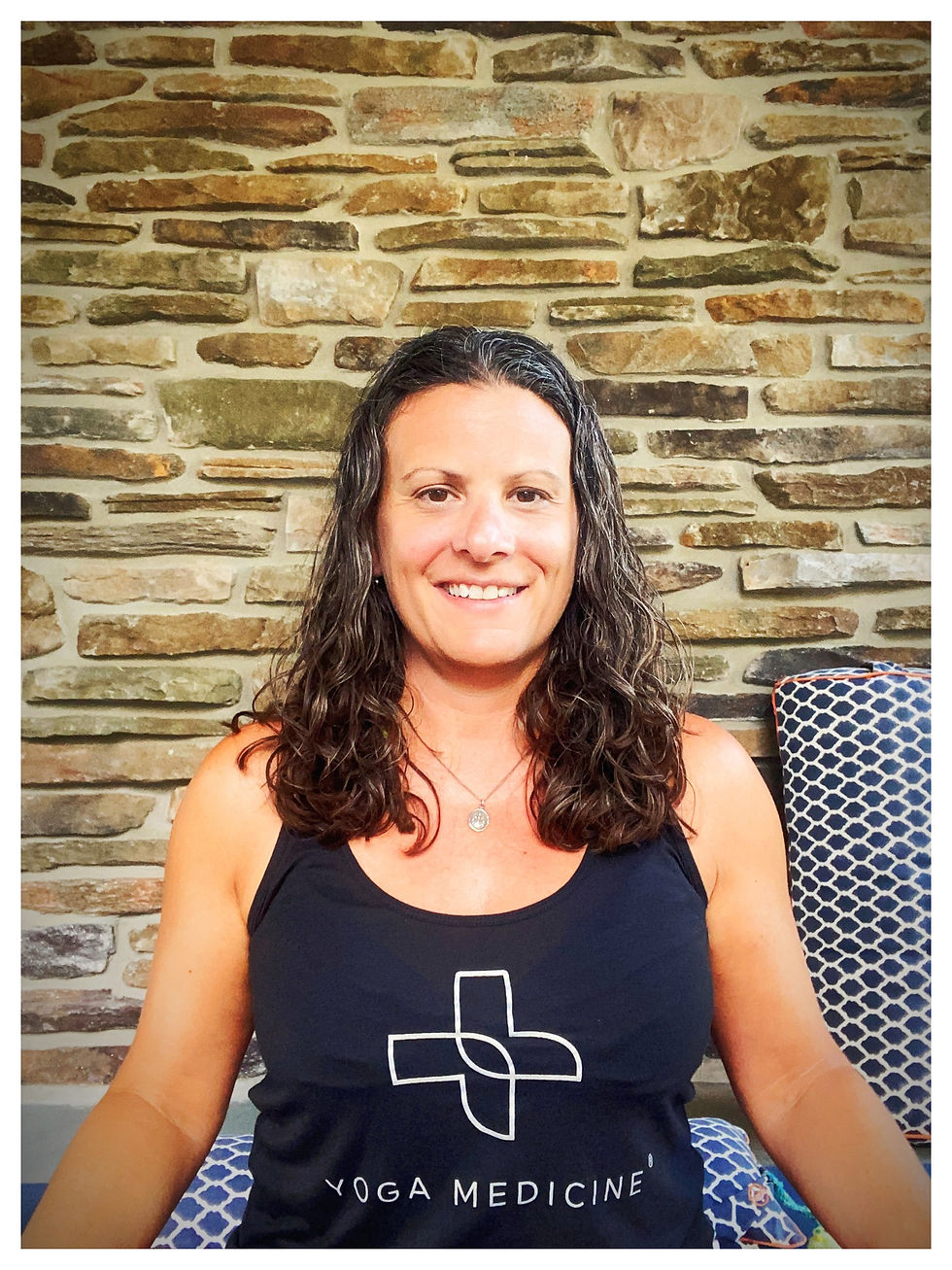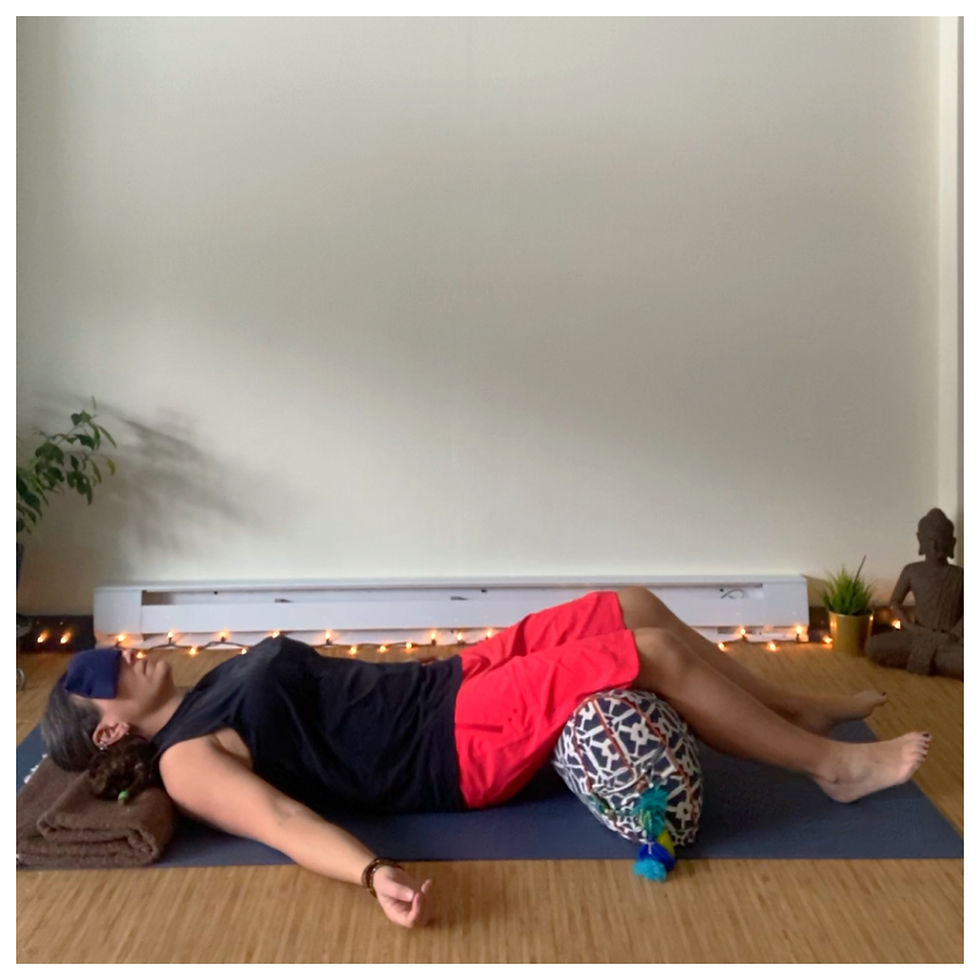"What Kind of Yoga Do You Teach?"
- Joy Zazzera

- Aug 18, 2021
- 8 min read
Updated: Aug 20, 2021
I was recently asked by a new client after having taking a few classes with me to describe the style of yoga I teach.
While my yoga is best left to your direct experience as a participant in my series classes my client asked a GREAT QUESTION, one I’m happy to answer here as a point of reference for anyone considering taking a series of classes with me. Because you should know exactly what you're investing in, signing yourself up for and placing your trust in.
Yoga is a very subjective experience from person to person. In short, from its ancient Eastern lineages, yoga movement styles were meant as way to help practitioners apply its philosophical practices within a movement (asana) context. The history of yoga is vast and it is not my intention with this blog post to even begin to scratch the surface of its ancient teachings or more modernized practices. However, through time, our instantly-gratified and commodified Western society has progressively created a mountain of “yoga” off-shoots that use the word “yoga,” yet offer little practical application to it’s ancient teachings or evidence-based approaches. As a student of yoga for over 20 years, with multiple experiences living in communities up and down the east coast, I've experienced a lot of varied yoga styles, teachers and instructors and have seen and experienced the increasingly vast ways yoga is being offered and sold. While it’s one thing to have yoga more available than it ever has been, finding a style and knowledgable teacher that is best suited for you it is an important consideration that shouldn’t be overlooked. As an independent yoga teacher, I look for students that will be a good fit with the style of yoga I teach - that means it would be impossible to teach yoga to everyone. I am also interested in taking on students who are interested in making a small commitment to themselves not only as a way to balance the commitment I bring to my brand, and teaching, but because without commitment to change, change is impossible.
Regardless of one’s experience with yoga, the type of identities that fit well within my classes don’t necessarily live similar lifestyles in the present tense but do have similar needs if their “whole-body” goals are any or all of the following: balance, stability, flexibility, durability, longevity, focus, presence, resiliency, recovery, relaxation, confidence, clarity and mindfulness.
More specifically, my fellow Generation X’ers determined to build a more awakened and aware body for the second half of life; adults desiring to maintain the range of motion they have today and work to prevent injuries and increase ease related to aging, stress, disease, and changing life circumstances; athletes looking for a holistic antidote for today's intense training practices and to create future longevity; athletically-minded adults who feel disconnected from the body they have today; older beginners, new to yoga; and anyone preparing for or those living with a joint replacement or two, like me!

I’ve gathered the most relatable, educated and highly effective teachers of yoga teachers I could find to fill my echo chamber with empowering, educational yoga best suited for the identities I listed above. They didn't give me all the answers or proclaim to have them. They did and continue to encourage me to stay curious, investigative and to always validate my clients subjective experience as equal importance to my ability to help them. Over the past 4 years, I’ve attracted a niche of clients that aren’t all identical in their stages of life or daily activities, or even needs and goals for their yoga practice, but are growing in understanding that finding balance through yoga comes from doing less, not more. I help and teach people to disconnect from external distractions as a way to amplify and develop greater trust in their inner-listening skills. I help my clients feel more present and connected by training up their perceptive powers. I offer variations of poses and movements, not just for different experience levels but to encourage you to do things differently just for the sake of it.
Yoga can be an intervention for the mind and body but only if that is our focus as we practice it. One of my jobs as a yoga teacher is to get people more interested in the vessel(body) they are living in and anatomy gives meaningful experience to practicing yoga. Those with the mindset that because my yoga moves slow, it must be too easy, or those put-off that my classes are not filled with spiritual bypassing and mysticism, are not yet ready to move with great inner-attention to detail and are usually attracted to instructors leading faster, sexier, sweatier, culturally spiritualized movement experiences - for which our instantly-gratified and commodified society has created no shortage of. But research is showing that yoga, in a more introspective environment, allows us to take in greater details about our experiences in our body, allowing us to have a true conversation with it. Moving slowly and simply with low load is really important to induce neurologic and muscular shifts and patterns of how the body works together. Given what we spend most of our time doing has the biggest influence on our soft-tissue, slow, mindful movement, whether you call it yoga or something else, helps us to rewire our neuromuscular adaptations with positive disruptions. It is at this pace that our sensations can truly backdrop our experience and can help us reflect on what it means to move and be moved in our physical world. Otherwise, we are just taking our lives full of demand, power and force straight into our yoga practice.
Through moving slow, my clients have the space to feel the challenge in the tissues and relish in finding things they can work with rather than using momentum and memory - like done in everyday life - to move through their practice. I connect to this style of yoga I teach because of my personal familiarity with many of the physical and emotional obstacles people face and because I am dedicated to refining my teaching of therapeutic, anatomy-focused yoga. It is the style of yoga I practice the most and the style of yoga that has most helped connect me to my inner true-self. It is the style of yoga that changed me the most as my practice moves me confidently through my mid-life years and prepares me for what lie beyond.

It is not my intention to teach yoga to everyone. Nor do I claim to have all the answers. But I am unafraid to stand on a soap-box if it means, for whatever reason, a person hesitant about trying
yoga can find comfort and belonging through the “style” of yoga I teach. I am 100% unintimidated to spread a different yoga message than is the predominately popular message that grabs the news headlines, garners the most social media engagement or fills the larger studios with more bodies seeking power and heat. This kind of personal confidence has come to me after years of hard mindset work on myself and from seeking out and showing up for those yoga teachers and teacher-trainers delivering a similar message as above and perhaps most importantly, the teachers encouraging me to do things willing to stand in my corner cheering me on, rather than seeing me as their competition and sending me nasty correspondence.
Through my intensive study with world-renowned yoga teacher and teacher-trainers I have been able to incorporate and explain with purpose a variety of yoga styles and physiotherapeutic practices into all of my offerings. Participants in my signature series Yoga with Joy can expect a fusion of Hatha, Restorative, Yin, Vinyasa, Yoga Nidra, as well as Myofascial Release, Meditation and Mindset practices that will also be supported with more therapeutic movement techniques. I also offer two classes on either side of the happy-medium with the more dynamic Lifelong Athletic Balance and the more relaxed Restorative Yoga, while Yoga for Older Beginners is best suited for those with physical restrictions that prevent access to the floor.
In my time before teaching yoga, I studied teaching methodology and pedagogy as an undergraduate majoring in Education and used those skills repeatedly throughout my 15 year career as a teacher and college athletics administrator. I practiced yoga for most of that time period however never connected the dots on how I might combine my love of teaching with my love of yoga until a handful of years later. But how I would describe my teaching style today in a yoga context is exactly that - it's about helping people connect the dots.
Through subtle, slow and simple yoga and movement I can help you connect the dots to many of the most common tissue dysfunctions, help you increase your awareness about the affected structures and offer suggestions you might spend more time exploring on your own.

Yoga with Joy is a reflection of my lived experiences, the obstacles I've encountered, and the ways I've worked around those obstacles. My brand of yoga is a reflection of the great investment I've made in myself as a student of yoga, as a yoga teacher and as a creator of an independent sustainable yoga business. It's a reflection of the time spent seeking out and learning from a small handful of the best yoga teacher trainers from around the globe. Through traditional and non-traditional yoga poses and therapeutic movement I teach you how to develop greater awareness and knowledge about your body and lead you toward improved
connection between your whole mind + body system.
Yoga with Joy is yoga and movement that brings you into yourself by phasing out as many distractions as possible and moving slow and with a stated purpose - and sometimes that purpose is simply to move with curiosity without being tied to specific results, rather, paying attention in greater detail to what is discovered along the way. On my mind as I consider the content I'll teach in my yoga series are the following intentions for our time together:
Introspection
Sensory Awakening
Exploratory
Harmonizing
Accessible
Deceptively Challenging
Patient
Restorative
Relaxing
Presence-building
Informing
Core-focused
Posture-enhancing
Functional Balanced
Body-positive
Confidence-building
How much of these qualities you'll experience will depend on your ability to trust in the plan and process without being tied to any specific or performance-driven results. Your dedication and ability to connect the dots as we progress through our time together will offer most meaning as you take Yoga with Joy off the mat and out into your daily life. If you enjoy your experience and recognize the number of dots aligning for you as you move and live and the world, you'll begin to develop a clearer understanding of "the kind" of yoga I teach. And maybe even be able to describe it to someone in a way that brings them into the practice, it's teachings, and ultimately into an improved connection with themself.
Throughout my blog I offer simple techniques and fresh perspectives that connect the many dots within yoga's traditional teachings, functional and therapeutic movement, human anatomy and it's application to yoga, mindset, relaxation and living confidently with change and life circumstances that ask us to either pivot or perish. Feel free to connect with me further if you feel inclined to ask a specific question pertaining to my services.
Until you’re able to experience my teaching for yourself, I wish you patience in your journey of connecting the dots in your life.
For further guidance on what to expect taking classes with me, please browse through my blog on a myriad of topics ranging from Yoga Philosophy, Yoga Anatomy, Yoga for Athletes, Yoga for Back Care, Yoga for Osteoarthritis and Joint Replacements, Mindset and Meditative practices and more.







Comments